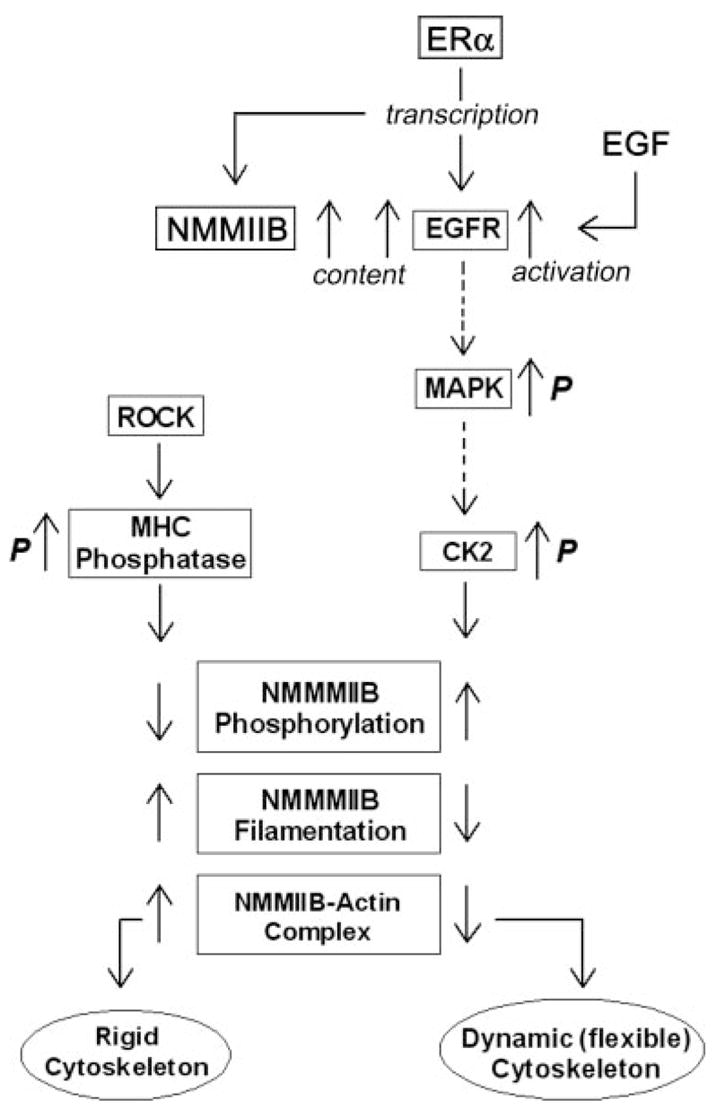Fig. 11.

Model of estrogen regulation of NMM-II-B of the cortical actomyosin in human vaginal-cervical epithelial cells. Estrogen induces phosphorylation (p) of NMMHC-II-B filaments, abrogation of NMM-II-B filamentation, and disassociation of the myosin from the cortical actin, which lead to formation of a dynamic (flexible) cytoskeleton. The proximal cascade of estrogen effect involves ERα up-regulation of NMM-II-B and EGFR genes transcription. Midsteps involve the EGF-EGFR and ERK-MAPK signaling cascades, and the terminal effectors are the CK2 and ROCK-regulated myosin heavy-chain (MHC) phosphatase. Whether the EGFR/MAPK cascades modulate CK2 phosphorylation status or whether the effect involves other signaling networks that operate in parallel remains to be determined (broken lines).
